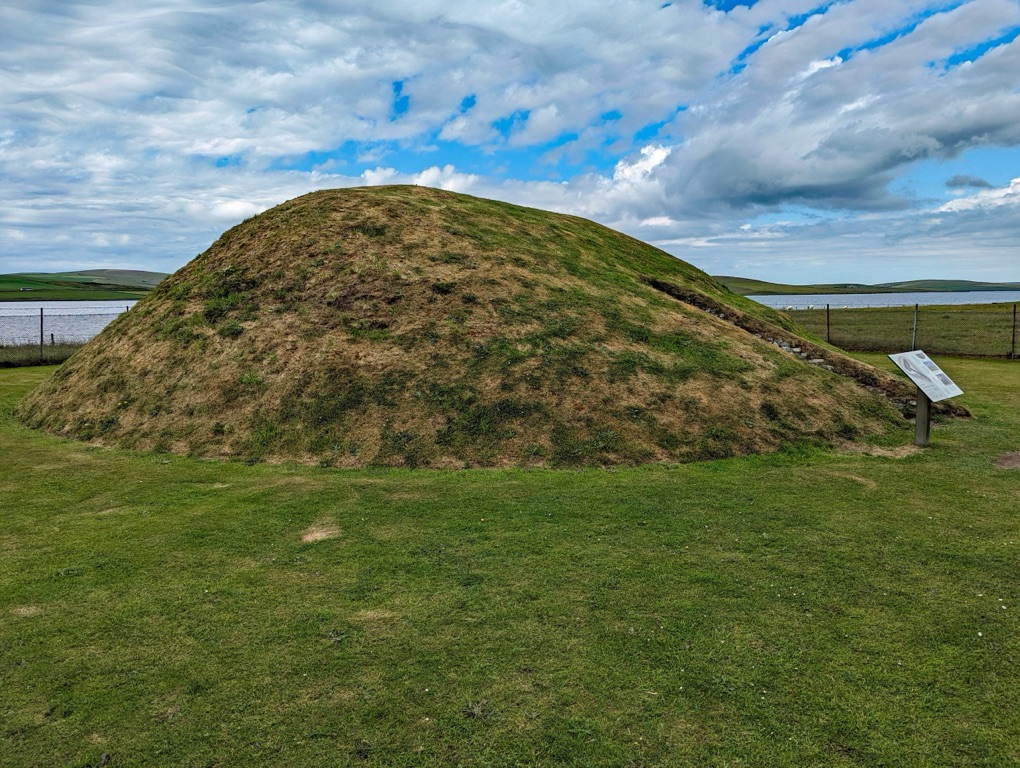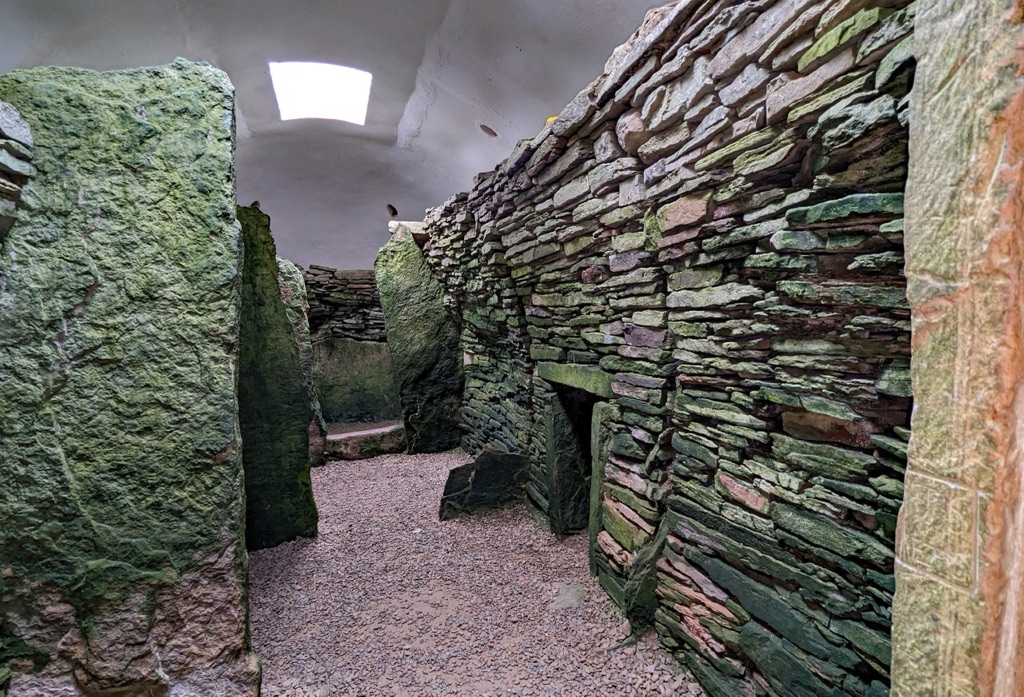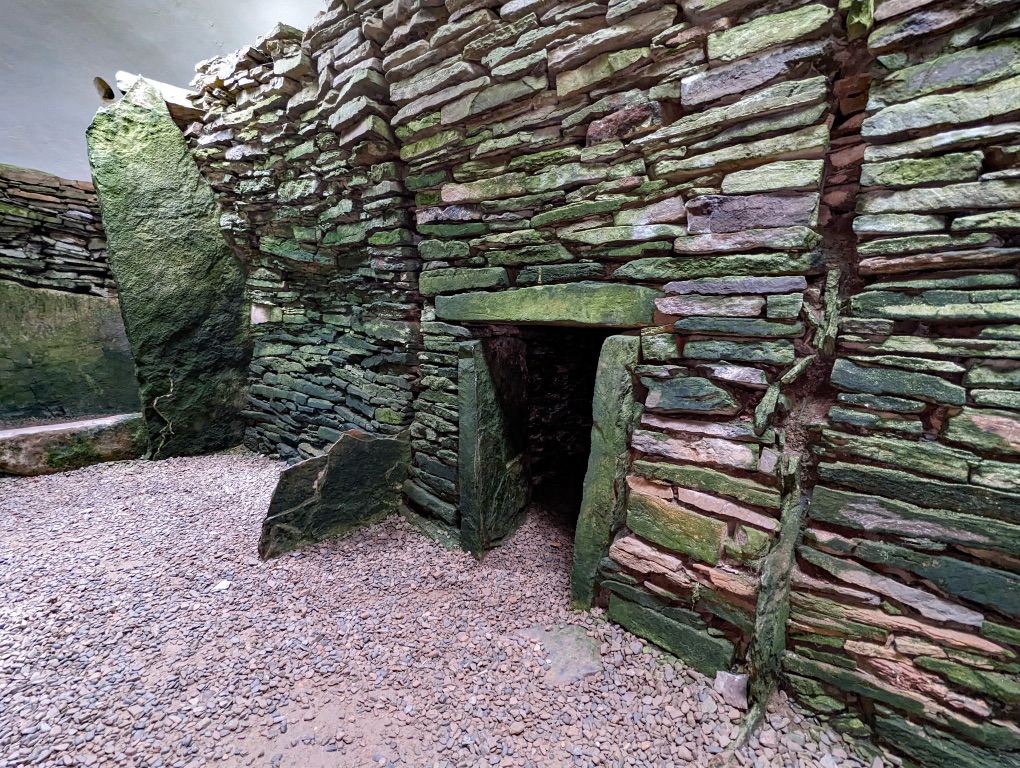The Unstan Chambered Cairn is a Neolithic tomb located on the Mainland of the Orkney Islands, Scotland. It’s a remarkable example of the Orkney-Cromarty type of chambered cairn, which dates back to around 3400 to 2800 BC. The cairn was discovered in the 19th century and has since been a subject of archaeological interest. It features a large, round mound with a central chamber and is known for its distinctive architecture and the artifacts found within, including pottery that has given its name to a style of Neolithic ware: Unstan ware. The site offers insights into the burial practices and ceremonial activities of the Neolithic people of Orkney.
Get your dose of History via Email
Historical Background of Unstan Chambered Cairn
Unstan Chambered Cairn was discovered in the 19th century by a local farmer. The exact year of discovery is not well-documented, but it quickly drew attention. Archaeologists have since studied the site, revealing its historical significance. The cairn is a product of Neolithic builders, known for their sophisticated construction techniques. These communities inhabited the Orkney Islands over 5,000 years ago.
The builders of Unstan Chambered Cairn were part of a wider Megalithic tradition. This tradition spanned across Europe during the Neolithic period. The cairn’s design is unique, combining features of both Maeshowe-type tombs and the stalled cairns of Orkney. This suggests a blend of cultural influences or a transition in burial practices.

There is no evidence that the cairn was inhabited after its initial use as a tomb. However, it served as a final resting place for numerous individuals. The human remains found within suggest that it was used over an extended period. The cairn has not been linked to any historically significant events beyond its use in Neolithic times.
Unstan Chambered Cairn stands as a testament to the Neolithic society’s complex social and spiritual beliefs. The care taken in its construction and the placement of the dead within its chambers indicate a society with a rich ceremonial life. The cairn is an important link to understanding the prehistoric inhabitants of Orkney.
Today, the cairn is a protected historic site. It is accessible to the public, allowing visitors to step back in time and experience a piece of Neolithic Orkney. The site continues to be a focus of archaeological interest, with ongoing research shedding light on the lives of its builders.
About Unstan Chambered Cairn
Unstan Chambered Cairn is a well-preserved Neolithic tomb. It features a large, circular mound of earth and stones, measuring around 23 meters in diameter. The cairn’s central chamber is accessible via a low passage, which is typical of Neolithic tombs in Orkney.
The construction of the cairn involved large, flat slabs of stone. These were carefully placed to create the chamber and passage walls. The roof of the chamber was constructed using the corbelling technique, where stones are layered inward to form a dome-like structure.

The building materials for the cairn were sourced locally. The Orkney Islands are rich in sandstone, which was used in the construction. The builders demonstrated a high level of skill and understanding of their materials, as evidenced by the cairn’s enduring structure.
Unstan Chambered Cairn also contained pottery, now known as Unstan ware. This pottery is distinct in its design, featuring round-bottomed bowls with incised decoration. The presence of such artifacts provides valuable information about the material culture of the Neolithic people of Orkney.
Theories and Interpretations
Several theories exist about the use of Unstan Chambered Cairn. The primary interpretation is that it served as a communal burial site. The human remains and artifacts found within support this theory.
Some mysteries surround the cairn, particularly regarding the significance of its unique architectural style. The combination of stalled and Maeshowe-type features suggests a possible evolution in burial practices or a merging of different cultural traditions.
Interpretations of the site have had to rely on comparisons with other Neolithic sites in Orkney. There are no written records from the time, so archaeologists must piece together the cairn’s history from the physical evidence.
Dating of the cairn has been carried out using radiocarbon dating methods. These methods have confirmed its construction and use during the Neolithic period. The dating aligns with the broader timeline of Megalithic structures across Europe.
The Unstan ware found at the site has also contributed to our understanding of Neolithic Orkney. The pottery style is distinct from the Grooved ware commonly found at other Orkney sites, suggesting a degree of cultural diversity within the Neolithic population.
At a glance
- Country: Scotland
- Civilization: Neolithic Orkney
- Age: Approximately 3400 to 2800 BC
Conclusion and Sources
- Wikipedia: https://en.wikipedia.org/wiki/Unstan_Chambered_Cairn
- Historic Environment Scotland: https://www.historicenvironment.scot/visit-a-place/places/unstan-chambered-cairn/
- UNESCO World Heritage Centre: https://whc.unesco.org/en/list/514/

